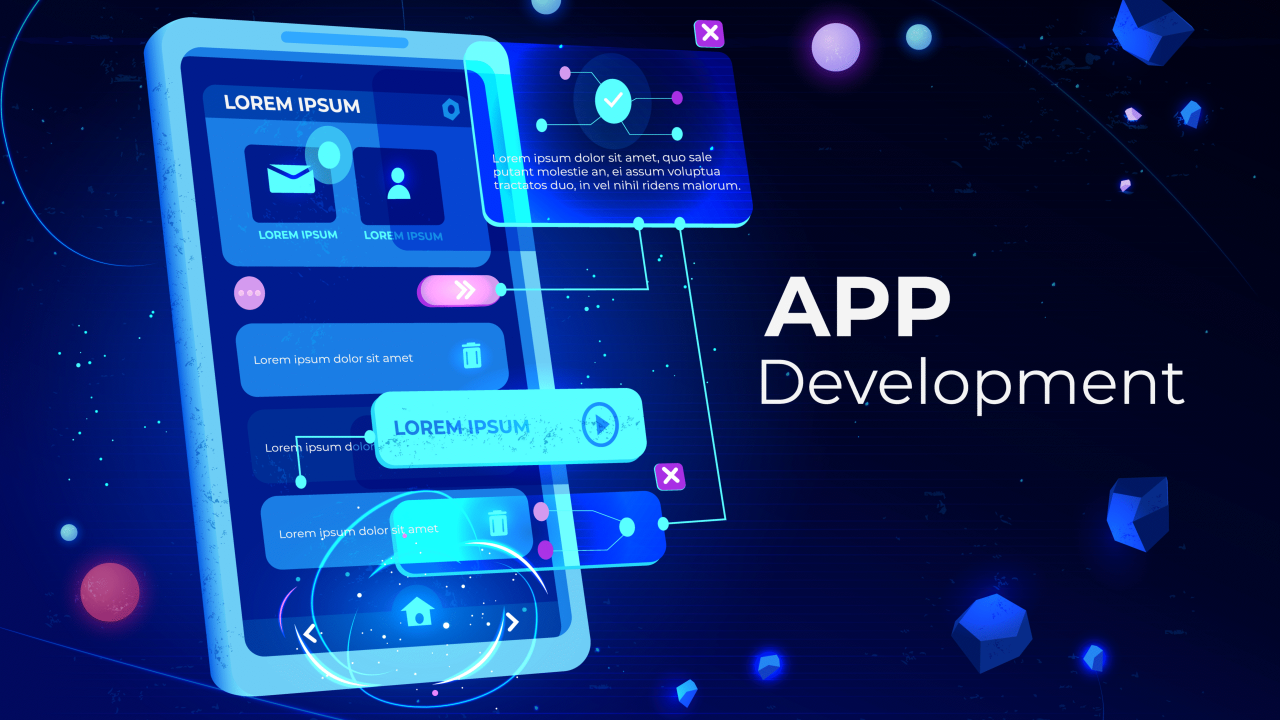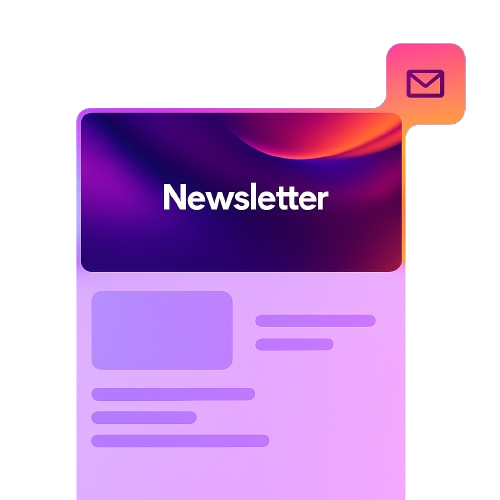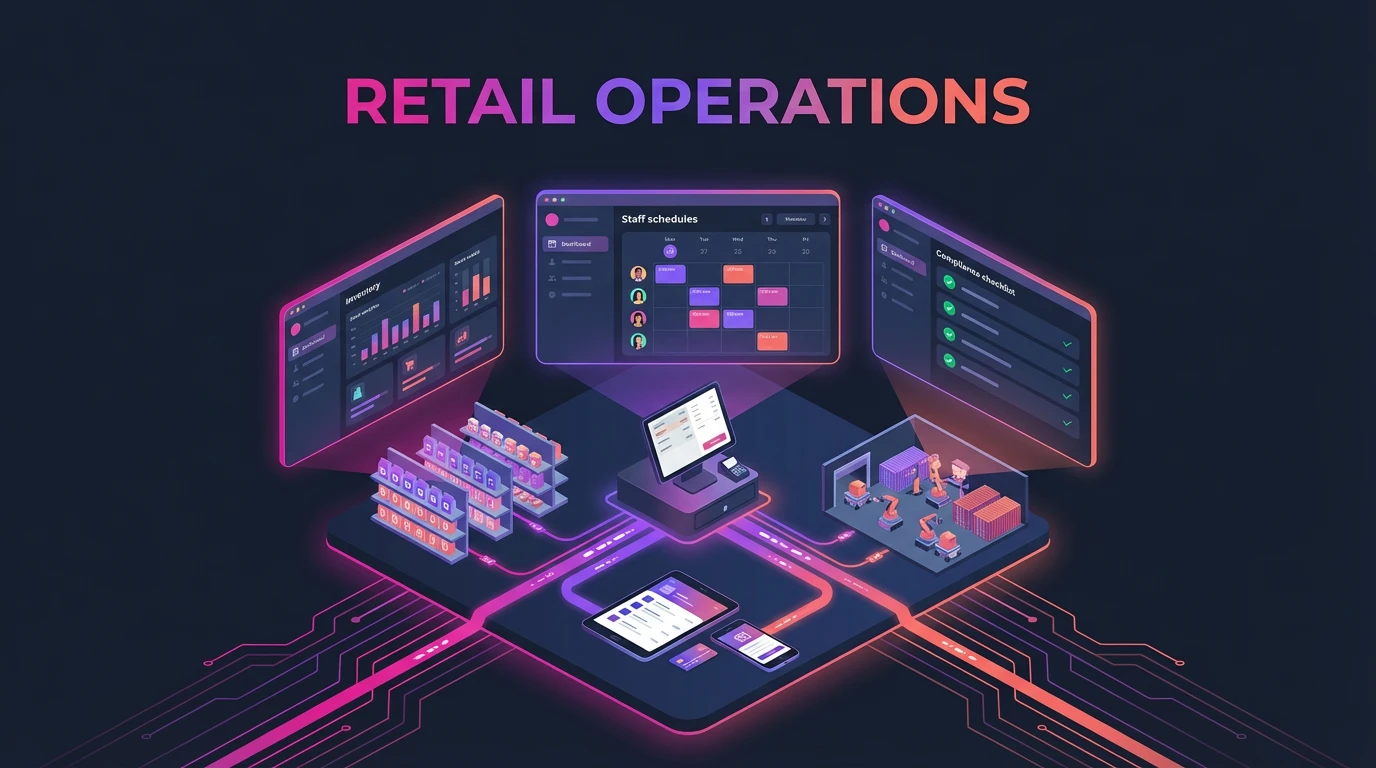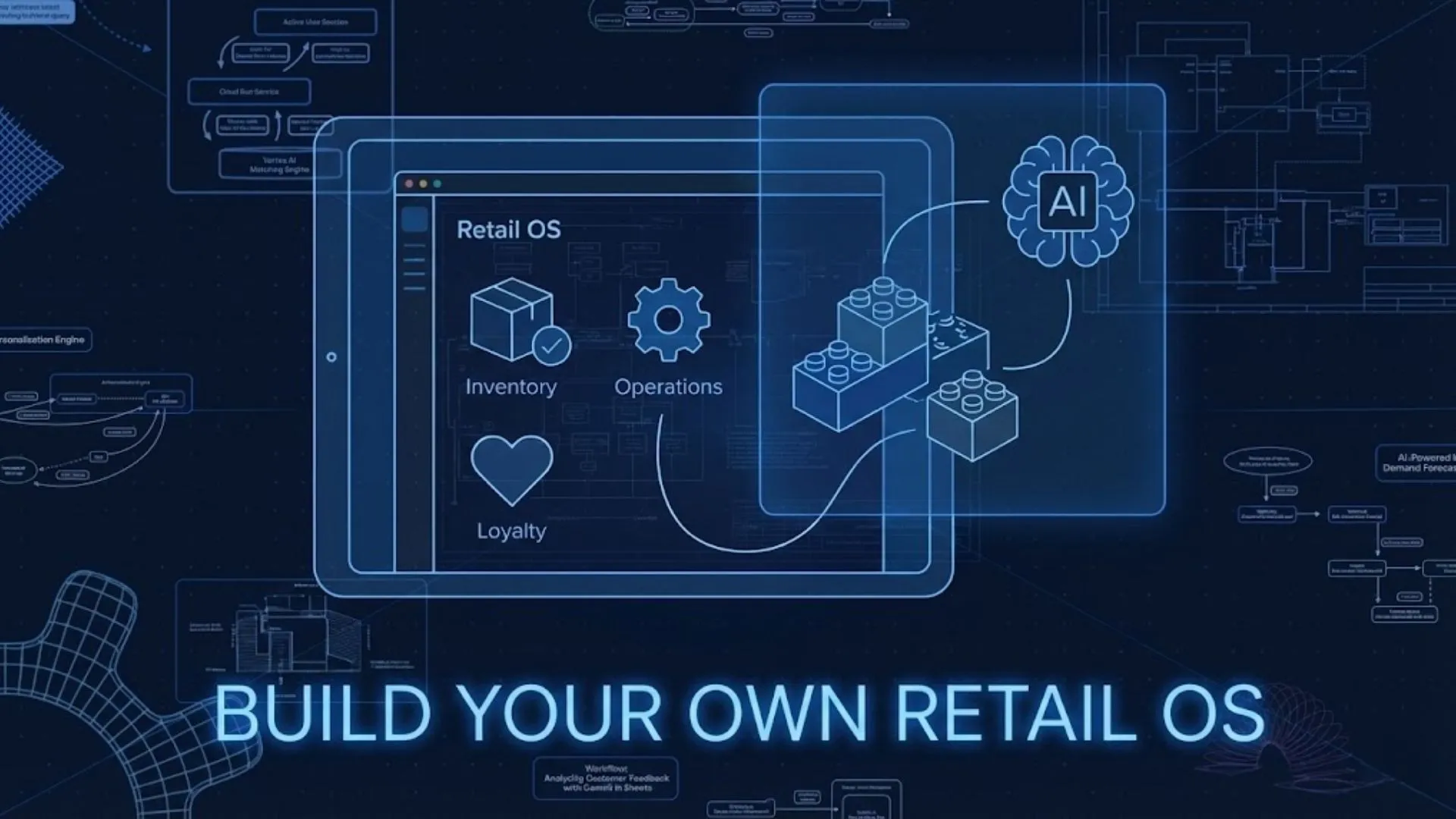
Create an app with a Single Click
Creating an app with a single click is now a practical reality thanks to modern development tools and AI-powered platforms. These solutions simplify the process by automating much of the coding and setup, allowing users to generate fully functional applications quickly without deep technical knowledge.
The key to creating an app with a single click lies in using platforms that translate simple prompts or commands directly into working code, minimizing manual input and setup time. This approach benefits both beginners and experienced developers looking to speed up their workflow.
Launch Your App Today
Ready to launch? Skip the tech stress. Describe, Build, Launch in three simple steps.
BuildSeveral tools, like AI coding assistants and streamlined app builders, offer easy ways to launch projects instantly. They handle everything from the user interface to backend logic, making it faster and less complex to move from idea to app.
Understanding One-Click App Creation
One-click app creation streamlines the process, reducing the technical steps needed to launch an application. It allows users, including non-technical founders, to quickly build functional apps, often producing a minimal viable product (MVP) without coding.
Definition and Core Concept
One-click app creation refers to platforms or tools that enable app development with minimal manual intervention. These solutions typically employ zero-code interfaces where users select templates, add features, and deploy apps in a few clicks.
The core concept centers on automation, guiding users through pre-built components and workflows. This method prioritizes speed and accessibility, allowing founders without programming knowledge to focus on idea validation rather than complex coding. The output is usually an MVP that can be tested quickly.
Such platforms often leverage cloud infrastructure and templates optimized for common app functions. By removing traditional coding, one-click creation reduces the barriers to entry for app development, particularly in early startup stages.
Traditional vs. Automated App Development
Traditional app development involves manual coding tasks — designing UI, writing backend logic, and managing deployment. This process requires technical expertise, time, and coordination between multiple roles such as developers, designers, and testers.
In contrast, automated or one-click app creation relies on drag-and-drop builders, pre-configured integrations, and automated publishing tools. This drastically shortens development cycles, enabling faster MVP launches.
While traditional development provides full control and customization, one-click creation sacrifices some flexibility for speed and ease. Founders prioritizing rapid market testing often prefer zero-code solutions to validate app ideas before investing in custom builds.
| Factor | Traditional Development | One-Click App Creation |
| Required Skills | Programming, Design, Testing | Minimal to none (Zero-Code) |
| Time to Launch | Weeks to months | Minutes to hours |
| Flexibility | High | Limited but sufficient for MVP |
| Ideal For | Complex, customized apps | Rapid MVPs, simple workflows |
Overview of Imagine.bo: Transforming Ideas into Apps
Imagine.bo simplifies app creation by enabling users to build scalable software quickly without coding skills. It combines automation, AI-driven design, and expert guidance to turn concepts into functional apps efficiently.
Platform Capabilities
Imagine.bo offers a no-code environment that supports deploying apps across major cloud providers like AWS, GCP, and Vercel with a single click. This seamless deployment ensures automatic scalability to handle increased users or data without manual intervention.
The platform caters to various users, including non-technical founders, solo entrepreneurs, and small teams. Its chat-based interface allows describing app requirements naturally, removing the need for coding or a development team.
Features include app building, automation, and publishing tools, all integrated into a unified system. This lets users move from idea to live app rapidly, with minimal technical overhead.
AI-Driven App Blueprinting
A key strength of Imagine.bo is its AI-generated blueprint system. When a user describes their app idea, the AI translates it into a detailed plan covering architecture, user flows, and necessary features.
This blueprint acts as a precise foundation, guiding the automated build process. By automating these early design stages, it reduces errors and development time typically consumed by manual planning.
Users benefit from a clear, tangible structure early on, helping them understand the app’s scope and functionality before launch. The AI’s adaptability means it can handle different app types, from simple utilities to complex SaaS products.
Expert Engineer Support
Though the platform emphasizes no-code creation, Imagine.bo provides access to expert engineers for technical support when needed. These experts can assist with customizations, troubleshooting, or advanced integrations beyond the platform’s automated capabilities.
This support ensures users never get stuck due to technical limitations or unexpected challenges. Engineers work alongside users, enhancing confidence that complex requirements will be met without derailing timelines.
Having this hybrid approach balances ease of use and professional reliability, making Imagine.bo suitable for projects requiring flexibility and professional-grade results.
Step-by-Step Guide to Creating an App with a Single Click
Creating an app with a single click requires precise preparation and automation. It involves clearly defining the app’s purpose, translating that idea into a structured plan, and then using tools that automate the build process, minimizing manual input.
Describing Your App Idea
The first step is to clearly describe the app idea. This means identifying the core functionality and target users. The description should include the main features, intended platform(s), and overall purpose.
This clarity helps software or AI tools understand exactly what needs to be created, allowing them to generate a relevant app structure. The description might include points such as user login, real-time notifications, or data visualization depending on the app’s goal.
A brief but detailed outline will maximize the accuracy of the next steps, ensuring the app matches the original vision. Precise input prevents unnecessary revisions and speeds up the entire process.
Generating the App Blueprint
Once the idea is described, the system generates an app blueprint. This blueprint acts as a detailed plan, mapping out screens, user flows, and feature integration.
During this stage, the build tool or AI translates the description into components like layouts, navigation menus, or data entry forms. It automatically aligns elements based on best practices and platform requirements.
Having this blueprint ready eliminates the need for manual design and coding preparations. It serves as a foundation, ensuring the app’s logic and design are consistent with the vision described earlier.
Launching the Build Process
After the blueprint is created, the one-click build process starts. This single action triggers automatic code generation, UI assembly, and backend setup if applicable.
The build system compiles all app parts into a working application, targeting the selected platform, whether Android, iOS, or web. Users might need to click “start” or “build,” but everything behind the scenes happens instantly and without manual intervention.
Automation accelerates deployment and can provide output such as an installable APK or app package, dependent on the platform. This step eliminates traditional coding workflows, requiring only basic user input to finalize the app.
Key Features and Benefits
Creating an app with a single click simplifies development while ensuring critical technical and business aspects are addressed. The process offers straightforward ways to build without coding, maintain strong security standards, and access important user data for continuous improvement.
No Code Required
This approach eliminates the need for traditional programming skills. Users can build functional apps using visual interfaces, drag-and-drop components, and pre-built templates.
It supports those without technical backgrounds by automating complex coding tasks.
Platforms typically offer integrations with popular services and customizable features, allowing for flexible app creation without writing a single line of code. This saves time and reduces the risk of coding errors.
Users focus on design and content, not syntax or debugging.
Professional-Grade Security and Compliance
Security is built into the app creation process through automated checks and standardized safeguards.
The platform enforces encryption protocols, access controls, and vulnerability scanning to protect data. Compliance with regulations such as GDPR or HIPAA is often included, helping apps meet legal requirements from the start.
Regular updates and patches are applied automatically to address emerging threats, minimizing maintenance burdens for users.
This approach delivers enterprise-level protection, making apps safe for handling sensitive or personal information.
Analytics and Insights Overview
Integrated analytics dashboards present real-time user data through clear visualizations and reports.
Developers and business owners can track engagement metrics like active users, session duration, and feature usage without external tools.
The dashboards help identify trends, measure app performance, and detect areas needing improvement.
Decision-makers use these insights to optimize app functionality and user experience.
Automated data collection reduces manual effort and promotes data-driven growth strategies.
Scaling and Deployment Options
Effective app scaling and deployment depend on selecting appropriate cloud infrastructure, leveraging automated scaling features, and managing sudden changes in user demand. Each of these elements impacts app performance, cost efficiency, and user experience.
Cloud Infrastructure Choices
Choosing the right cloud infrastructure shapes how easily an app can scale and deploy. Leading platforms like AWS, Google Cloud Platform (GCP), and Vercel provide varying levels of managed services to simplify app deployment.
AWS and GCP offer extensive scalable infrastructure options, including compute instances, container orchestration, and serverless computing. These options provide flexibility to match app requirements at different growth stages. Vercel specializes in deploying front-end and serverless apps with seamless integration and instant global content delivery.
Pricing tiers and regions also influence deployment. Selecting the right region closer to target users reduces latency. Pricing affects how many resources can be provisioned, directly correlating to scaling capability.
Automatic Scalability for Growth
Automatic scalability allows an app to adjust resources based on predefined metrics like CPU usage, memory, or request count. This approach reduces manual intervention and prevents over-provisioning or slowdowns under higher loads.
Platforms such as Azure App Service, AWS Elastic Beanstalk, and GCP App Engine offer autoscaling features. These systems can scale out by adding instances or scale up by increasing resource allocation to existing instances.
Many provide both manual and custom autoscale options, allowing fine-grained control based on schedules, triggers, or policies. Early configuration is critical to ensure smooth scaling without interrupting ongoing deployments.
Handling Traffic Spikes
Apps must maintain responsiveness during unexpected traffic surges. Traffic spikes can be managed by scaling out — creating multiple instances or clones of the app behind load balancers.
Load balancing distributes requests evenly across instances, preventing overload on any single resource. Both cloud providers like AWS Elastic Load Balancer and managed platforms like Azure App Service include load balancing capabilities as part of scaling solutions.
Plans such as Azure’s App Service Plan allow for configuring a maximum number of instances to control costs while providing headroom for spikes. Continuous monitoring and alerts help teams respond swiftly when demands exceed automatic scaling limits.
Target Users and Use Cases
Creating an app with a single click suits various user types with focused needs. It particularly benefits those who require rapid deployment, clear MVP frameworks, or streamlined client solutions.
Entrepreneurs and Startups
Entrepreneurs often need to validate ideas quickly without heavy technical investment. A one-click app creation tool enables founders to build minimum viable products (MVPs) rapidly, saving time on complex coding.
This approach supports quick iterations based on user feedback and market demand. It allows startups to focus on refining their business models and customer acquisition instead of development logistics.
Entrepreneurs benefit from easy integrations with existing cloud services and third-party APIs, accelerating go-to-market timelines while maintaining flexibility in app design and functionality.
Agencies and Client Projects
Small agencies managing client projects benefit from single-click app creation by reducing development cycles. This efficiency allows them to deliver projects faster and handle multiple clients simultaneously.
With streamlined deployment, agencies can focus efforts on customization, user experience, and feature enhancement rather than foundational coding. It also lowers overhead by minimizing large development teams.
Using such tools, agencies can offer MVPs to clients quickly, helping them visualize and test products before committing to full-scale builds. This fosters better client communication and expectation management.
Solo Makers and Side Projects
Solo makers or indie developers use single-click app creation to bring side projects or passion products to life with minimal barrier to entry. They often lack extensive coding skills and prefer intuitive solutions.
This method enables them to test app ideas, launch with modest features, and improve over time without needing dedicated teams. The process is ideal for experimentation and learning.
They can efficiently transition from concept to functioning app, leveraging integrations and templates that eliminate much of the repetitive coding work. This keeps development manageable alongside other commitments.
Getting Started with Imagine.bo
Imagine.bo offers a streamlined way to build apps quickly with minimal setup. From gaining early access to understanding how to move through its onboarding and finally reviewing the subscription costs, users can get going efficiently.
Joining the Private Beta
To join Imagine.bo’s private beta, interested users typically need to sign up through a waitlist. This phase is restricted to allow focused testing and feedback collection. Being part of this beta provides early access to core features and the chance to influence future updates.
Applicants usually receive an invitation via email after approval. Early access means encountering some unfinished features but also getting priority support. Users should prepare to share insights on their experience to help improve the product before its wider release.
Navigating the Onboarding Process
After gaining access, Imagine.bo guides new users through an onboarding process designed to minimize setup time. Users install necessary components like the Imagine SmartCompiler if working on specific frameworks such as Django. Documentation and interactive prompts help users define app features clearly.
The onboarding is centered around building and launching applications without coding, focusing on idea input through a chat interface. This process emphasizes understanding the user’s goals to generate app code autonomously. It also supports easy integration with cloud services like AWS or GCP for deployment.
Exploring Pricing and Subscription Plans
Imagine.bo’s pricing is straightforward and designed to be accessible for individuals and teams. The main plan charges $19 per user per month, offering full access to the platform’s capabilities. This model supports predictable budgeting for startups and agencies.
There might be additional tiers or enterprise options, but clear pricing for standard users simplifies decision-making. Users can often start with a free trial or beta access before committing financially, allowing evaluation of features without upfront cost. This transparency helps users weigh benefits versus expenses effectively.
Limitations and Considerations
Creating an app with a single click offers speed and ease but requires attention to specific limitations. These mainly involve the depth of customization available and the range of platforms that support such quick creation tools.
Customization Options
Single-click app builders often limit customization to pre-designed templates and standard features. This restricts control over unique design elements, advanced functionality, and specific user experience improvements.
Developers or users may find it difficult to implement custom code or integrate third-party services beyond what the platform natively supports. Additionally, adapting the app to niche market requirements or adding complex backend logic can be challenging or impossible.
Users should expect faster development times but at the potential cost of flexibility and innovation. For projects needing precise branding, extensive feature sets, or scalability, single-click solutions may fall short.
Platform Availability and Access
Not all no-code or single-click app builders support every platform equally. Many focus on popular operating systems like Android and iOS but may have limited or no support for others such as Windows or web apps.
Access to these platforms often requires signing up for specific services, some of which may involve subscription fees or feature restrictions based on pricing tiers. Offline access to development tools is rare, as most are cloud-based.
Device compatibility and publish options can vary widely. Users should verify if the chosen platform meets their distribution needs, including app store publishing processes and supported hardware.
The Future of One-Click App Creation
One-click app creation is evolving rapidly, driven by advancements in artificial intelligence and platform innovation. This development enables users to generate fully functional apps with minimal input, reducing complexity and time. The process is becoming more intuitive, allowing broader access to app development across industries.
AI’s Role in No-Code Development
AI significantly streamlines no-code app development by generating blueprints based on user input. This AI-generated blueprint outlines the app’s structure, features, and workflows automatically. Tools like imagine.bo use natural language processing to translate simple descriptions into working app frameworks instantly.
By automating logic and component selection, AI reduces manual configuration. This allows users without technical skills to create customized apps quickly. AI also improves over time by learning from user interactions and feedback, making future app builds more accurate and user-specific.
The integration of AI in no-code platforms supports rapid prototyping, enabling testing and iteration with minimal effort. It empowers users to move from concept to deployment faster than traditional coding methods.
Anticipated Platform Enhancements
No-code platforms are expected to enhance one-click creation with expanded functionality and integration options. Future updates will likely support more complex app features such as real-time collaboration, advanced data handling, and multi-platform publishing simultaneously.
Improvements will include better drag-and-drop interfaces, enhanced visual logic editors, and wider third-party service integrations. Platforms like Thunkable and Bubble are already focusing on scalability and cross-platform deployment improvements to reach larger audiences with a single click.
Security features and automated testing are set to become standard, streamlining quality assurance in one-click apps. These advancements will ensure that apps created quickly remain reliable and secure for commercial use.
Launch Your App Today
Ready to launch? Skip the tech stress. Describe, Build, Launch in three simple steps.
Build




